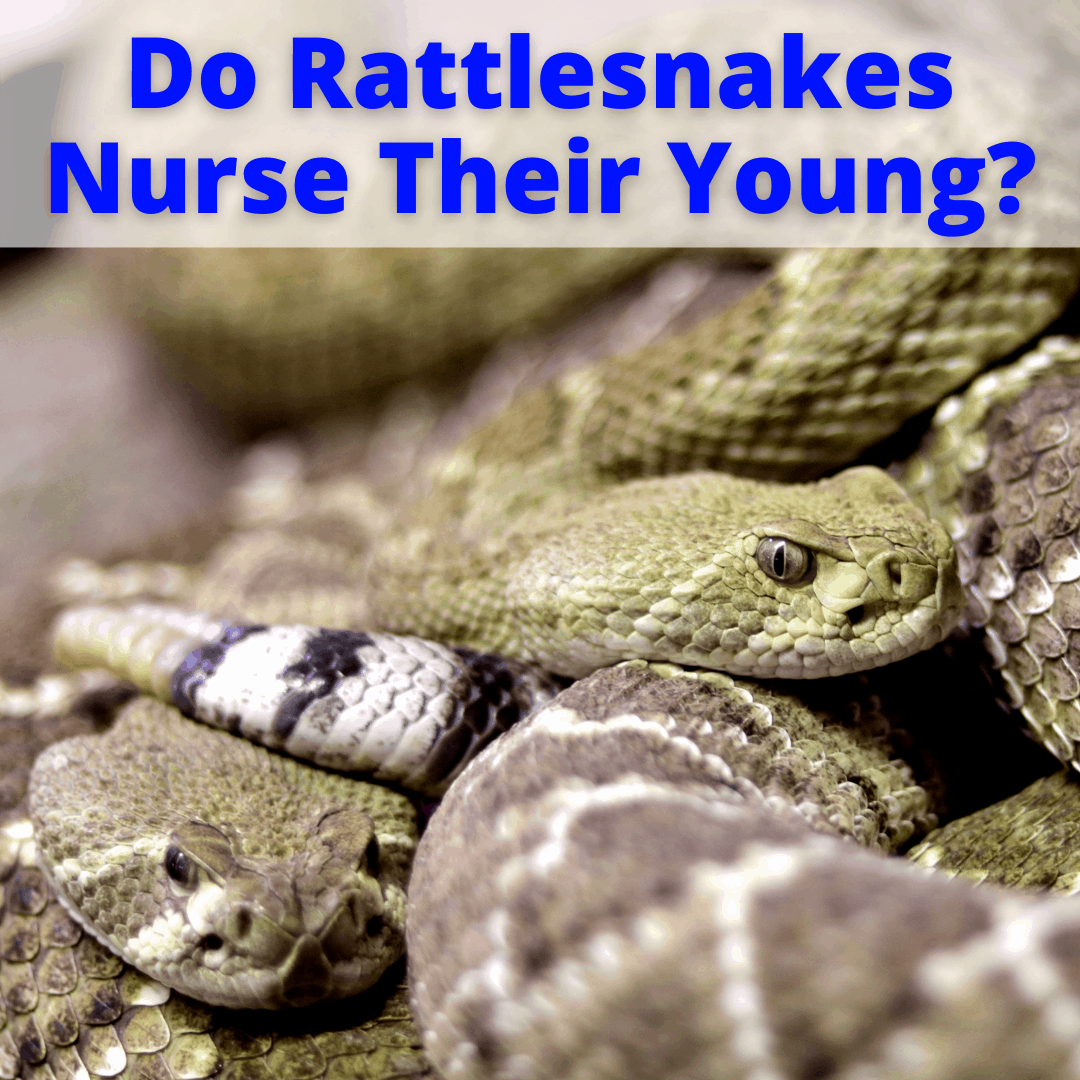
Are you asking whether rattlesnake mothers nurse their babies in the traditional sense, the way we humans do?
Or are you simply asking if they care for their young?
We’ll cover both possibilities below, but the answer to the first should be obvious.
The answer to the second might surprise you, if you know anything about the parenting habits of snakes n general.
Let’s jump right in and learn everything you need to know about rattlesnakes and their young.
Table of Contents
- 1 Do Rattle Snakes Nurse Their Young?
- 2 Rattlesnakes Nursing Young: Conclusion
Do Rattle Snakes Nurse Their Young?
Rattlesnakes don’t nurse their young at all. They can’t, because they don’t have mammary glands.
When we talk about animals nursing their young, we really mean that the female lactates to feed her babies milk. Since snakes are not mammals, they don’t lactate.
Since they can’t and don’t nurse their young, does that mean rattle snakes don’t look after their young? Or that they don’t provide food for their newborn snakes? Let’s take a look!
What Happens When Rattlesnakes Are Born
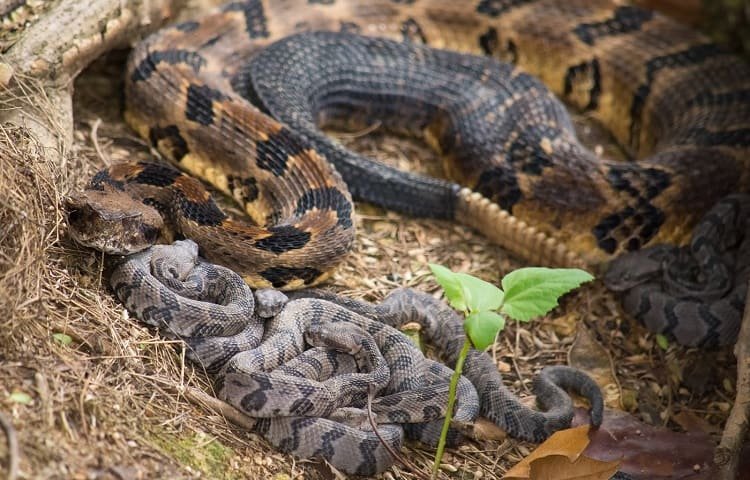
First, let’s look at how baby snakes are born. Different species give birth in different ways. Most lay eggs. Some give birth to live young.
Others have eggs, but they don’t lay them. Instead, they keep them in their bodies until they hatch. The hatchlings then emerge live.
Rattlesnakes are ovoviviparous. This means that the female snakes carry eggs inside them until they hatch. The babies emerge from the eggs while still inside the mother and then emerge live. This is why we do not know what rattlesnake eggs look like.
The mothers keep their babies inside their bodies in egg sacks. Inside these egg sacks, the babies receive the food they need to develop, until the time comes when they’re ready to be born.
It’s like they are incubated inside their mother’s bodies for the duration of the gestation period. This takes approximately 90 days, but it can be more depending on the species of rattlesnake.
The Western Diamondback rattle snake, for example, has a gestation period that lasts 167 days.
When the snakes are born, they break through the membrane of the egg sack. Mother snakes can give birth to between eight and 10 snakes at a time.
Soon after rattlesnakes are born and have shed their skins for the first time, the baby snakes are able to feed themselves.
Unlike mammals, they don’t require nursing or any feeding from their mothers. They generally leave the rattlesnake den within days, sometimes even hours, after birth.
They are even able to hunt their own prey. They feed on birds, small rodents, mice and other small animals. They need to eat once a week or so.
Do Rattlesnakes Care For Their Young?
While rattlesnakes can fend for themselves to a large degree soon after they are born, it doesn’t mean that their mothers don’t look out for them.
The mother snake will protect her young from predators and will usually ensure that the baby snakes stay with her for at least their first week of life, until their first shed.
Once they have shed their skin for the first time, they can hunt on their own,
How much snakes protect and guard their young varies from one type of rattlesnake to the other. For example, newborn diamondback rattlesnakes are given protection by their mothers for a short time.
Young western diamondback rattlers move away from their mothers mere hours or days after they’ve been born!
On the other hand, eastern diamondback rattlesnakes stay with their mothers for almost two weeks, until they shed their skins for the first time.
Are Rattle Snakes Social?
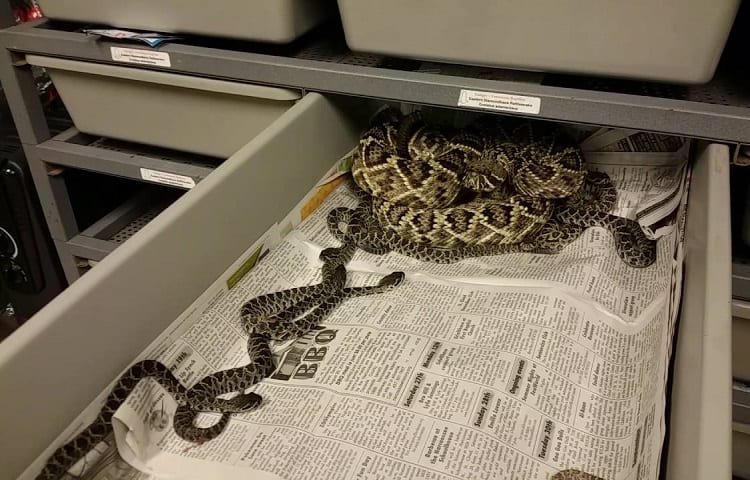
Snakes are generally solitary creatures that don’t spend a lot of time with other snakes. They hunt and live alone, and are not social animals.
However, researchers have found that rattle snakes can actually be a bit social, and they might even cuddle up with their family members.
They collecting tissue samples from 29 pregnant Timber rattlesnakes that were clustered together at birthing sites.
They then compared how related the pregnant snakes who clustered together were, compared to snakes that didn’t cluster together. They found that both pregnant snakes and juvenile snakes actually prefer to cluster with kin.
All the pregnant snake groups had at least two closely-related female snakes that researchers thought were probably mothers or sisters.
Do Rattlesnakes Have Rattles At Birth?
The rattlesnake is known for its rattle. But do they have these from birth or do they have to develop them as they grow older?
Since rattlesnakes can hunt their own food from when they’re about one or two weeks old, it makes sense that they would develop rattles from a very early age as well.
The rattle helps them defend themselves against predators and can also be used when the snake wants to distract its prey.
But they aren’t born with rattles. They are born with what’s called a pre-button, which is basically one piece of the rattle. The rest develop over time.
This development starts when the baby rattlesnakes shed their skin for the first time. This usually happens when the snake is around two weeks old.
Whenever the snake sheds its skin again, another section of the rattle is formed. A baby rattlesnake needs a minimum of two rattle segments before the rattle can to make a rattling noise.
After two shedding processes have occurred, the rattlesnake will have two rattle segments and be able to make the sound for which it is famous.
It will continue to add another segment every time it sheds throughout its life! However, you won’t find a rattlesnake that has more than eight or nine pieces in the wild, because of wear and tear.
People often wonder: do rattlesnakes shed their rattles? Now you know the answer. Not only do they not shed them, they actually add to them whenever they shed.
Are Baby Rattlesnakes More Dangerous Than Adults?
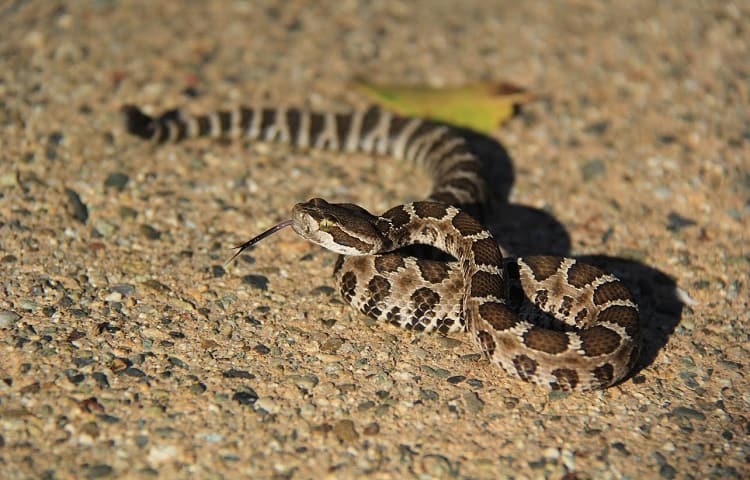
There’s a common belief that baby rattlesnakes are more dangerous and venomous than their adult counterparts.
Some people say that baby rattlesnakes are more poisonous and dangerous because they can’t control the amount of venom that they inject when they bite.
But is any of this true?
No! Baby rattlesnake bites are not more dangerous than those of adult rattlesnakes.
Research has found that the size of the snake determines how much venom it can inject into its prey, which in turn determines how venomous its bite will be.
Basically what this boils down to is: the bigger the snake, the more venomous its bite!
The venom in younger rattlesnakes is made up of Low Molecular Mass (LMM) toxins but it’s low in high molecular mass (HMM) enzymes.
HMM enzymes are more dangerous and more prominent in adult snakes. They cause serious effects such as tissue damage.
In addition to the different makeup of the venom, an adult rattlesnake can produce and inject between 20 to 50 times more venom than a baby snake.
Obviously, the more venom that is injected, the larger its effect on the victim.
But that doesn’t mean you should take a baby rattlesnake bite lightly! It can still cause you serious harm and you need to seek urgent medical care as soon as possible, if a bite has occurred.
How To Spot A Baby Rattle Snake
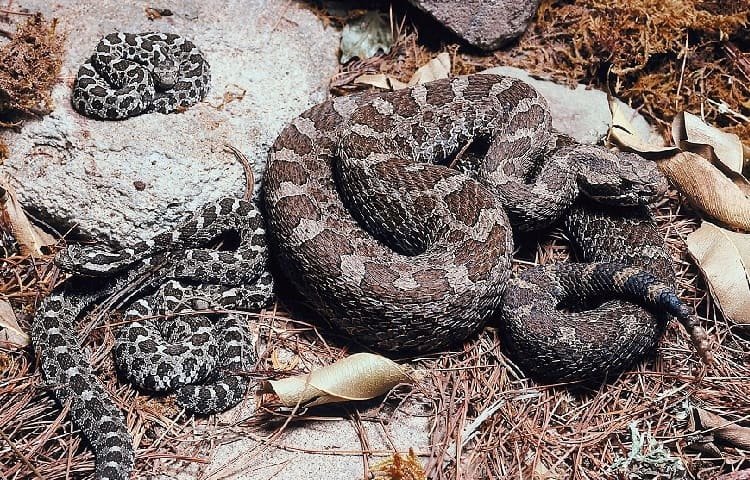
Baby rattlesnakes can look quite similar to their adult counterparts. Sometimes they can be difficult to spot because they haven’t developed properly yet.
Here’s what you need to know about identifying a baby rattlesnake, especially since newborn rattlesnakes won’t have their trademark rattles for a while.
- Baby rattlesnakes have the same body shape and markings on their skins as their adult counterparts. However, their markings won’t be as bold because their bodies are smaller.
- Even though they are smaller, baby rattlesnakes still have the triangular heads and thick bodies that taper at both ends, just like the adults.
- They’re much shorter. Adult rattlesnakes can reach up to eight feet in length, but younger snakes are only between six and 12 inches, so you should always watch where you step when you’re outdoors.
- They will coil up and hiss at you when threatened. Even if you don’t hear the baby snake making a rattling sound, it doesn’t mean it’s not ready to strike! If a baby rattlesnake coils up and hisses at you, take that as a warning sign that you need to move away from it very quickly. You should also bear in mind that even some adult rattlesnakes don’t always rattle before they strike.
Related Questions
What is that chica-chica sound that baby rattlesnakes make?
This sound is a result of baby rattlesnakes not having rattles until they shed their skins for the second time. They will make this sound as a warning before they strike.
What animals prey on baby rattlesnakes?
When they’re small, rattlesnakes are preyed upon by a variety of animals. These include raccoons, skunks, weasels, ravens, crows, and other snakes.
Rattlesnakes Nursing Young: Conclusion
Like all snakes, rattle snakes are reptiles. They do not produce milk to feed their young, so they do not nurse their young.
When it comes to caring for their babies after birth, rattlesnake mothers actually do more than most snake species. They stick around for up to 2 weeks, depending on the species, to provide protection and warmth for their offspring, until they are able to hunt for themselves.
Leave a Reply